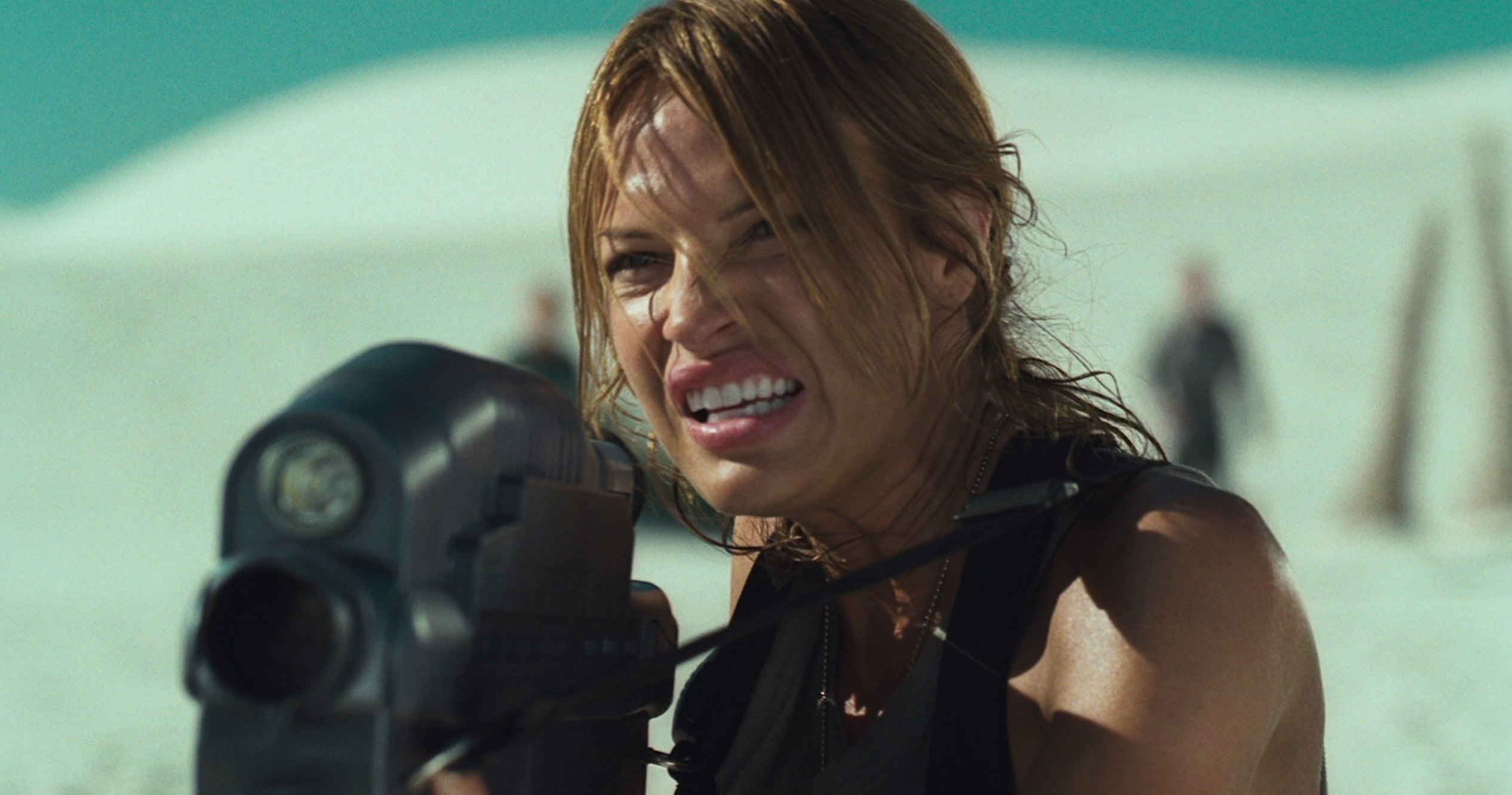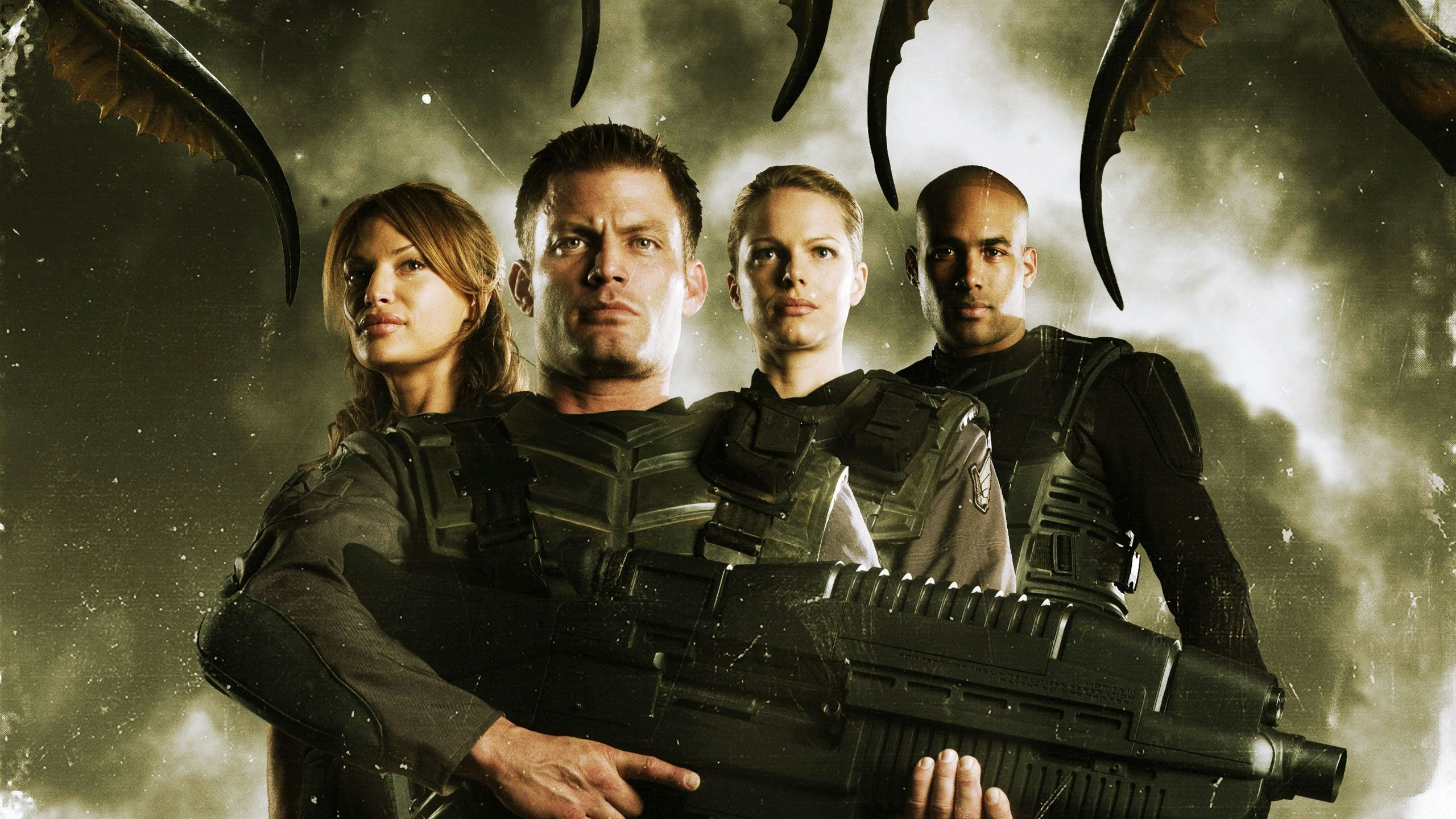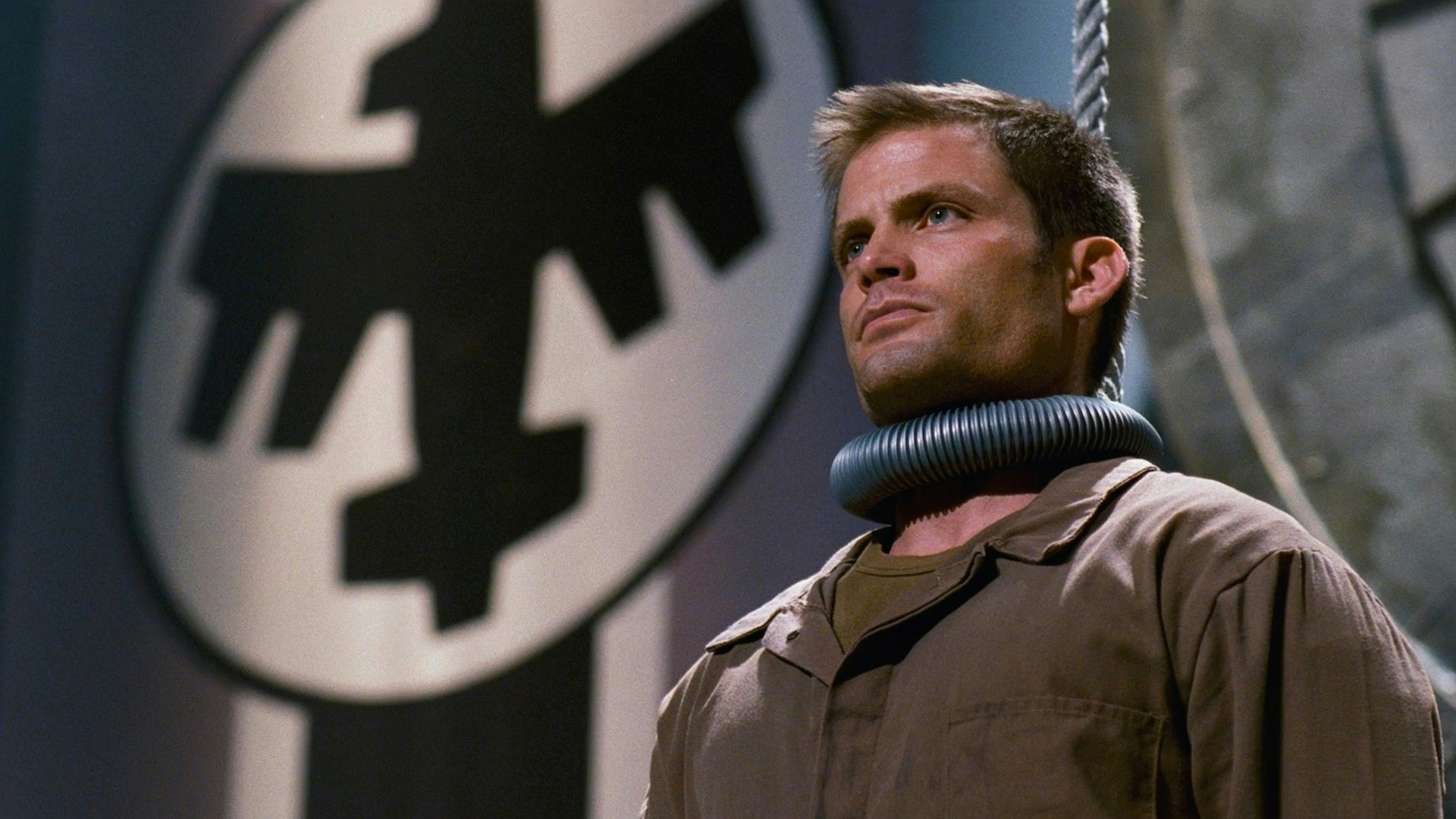
The last great experiments in science fiction cinema ended 15 years ago. While it’s undeniable that we currently live in a glut of legitimately great filmed sci-fi, the days of direct-to-video movies arguably resulted in creativity that can never be recreated. From the early 1990s to the end of the 2000s, these sci-fi flicks allowed for the creation of abominable sequels, which sometimes scanned as distant spoofs of the original movies upon which they’re based. (Ever seen Highlander: The Source?)
The strangest of these not-so-great sci-fi franchises is easily the Starship Troopers franchise, which spawned four spinoffs and a spinoff cartoon. But 15 years ago, on Aug. 5, 2008, Starship Troopers 3 came the closest of any of the sequels to actually capturing the spirit of the 1997 classic.
Starship Troopers 3 isn’t exactly a good sci-fi movie or even a good parody of Starship Troopers. But because its heart is so often in the right place — or at least in the place the original had been in — it’s not “bad” either. Looking back at Starship Troopers 3 doesn’t feel like looking back at a failure. Rather, it was the last of a dying breed.
The first thing you have to know about Starship Troopers 3: Marauder is that, unlike the previous sequel, this movie actually feels connected to the first film. That’s largely because Casper Van Dien returned as Johnny Rico for Marauder, while close to zero original cast members appeared in Starship Troopers 2: Hero of the Federation. (Note: As a few readers have pointed out, Brenda Strong returned for ST2 as her own twin sister from the first movie. An early version of this piece failed to mention that fact.)
That first 2004 Starship Troopers sequel (directed by legendary creature creator Phil Tippett) took a decidedly more straightforward and serious approach to the material, while Marauder (directed by the writer of the first film, Edward Neumeier) returns to the more satirical and camp elements of the original.
Neumeier is also the person who wrote the earliest screens treatments for RoboCop, so clearly, his sensibilities, at some point, became aligned with whatever mishmash of cinematic earnestness and satire pervades great Paul Verhoeven movies (specifically RoboCop and the original Starship Troopers). If you squint, Starship Troopers 3 is Neumeier’s attempt to homage Verhoeven as best he can.

The plot of Starship Troopers 3 centers on Johnny Rico trying to hold a specific base on a planet called Roku San. Rico meets up with his old friend Captain Lola Beck, played by Jolene Blalock (best known to sci-fi fans for her role as T’Pol on Star Trek: Enterprise from 2001 to 2005). Along with Van Dien, Blalock lends a certain amount of credibility to the movie, which is partly because of her Star Trek background, but also because she’s a deeply underrated performer.
Although she wasn’t in the original 1997 movie, she’s sort of perfect for the Starship Troopers universe, in the same way putting a post-Battlestar Katee Sackhoff in the third Riddick movie was brilliant, and totally foreshadowed her awesomeness in The Mandalorian. Basically, if you’re a Jolene Blalock and Enterprise stan, Starship Troopers 3 will convince you she deserves more cool sci-fi work.

Smartly, the plot of Starship Troopers separates Blalock and Van Dien, allowing the former to go on a survival mission, while the latter gets to rescue everyone. Like any good Starship Troopers plot, the overall conflict isn’t just limited to the insect-alien enemies the Arachnids. Instead, we eventually learn that cheesy Sky Marshall Anoke (Stephen Hogan) used his telepathic powers to try to make peace with the bugs, which instead allowed the bugs to infiltrate Terran Command and mess everything up.
As with the original, the fascist nature of the “Federation” in this future is on full display. Anoke even does song-and-dance numbers at the beginning of the movie that scan as Nazi propaganda fused with actual far-right politicians today.
It’s in these odd political moments that Starship Troopers 3 both falters and demonstrates its wasted potential. While the first movie gave smart viewers the option of viewing the entire film as camp and satire, Starship Troopers 3 is less clear. Religion has been outlawed in this future, but in the end, a revised and politicized form of Christianity is posited as the new religion of the Federation. How we feel about this doesn’t really matter, because the movie doesn’t really let the camp element fully take over the way the original film did. This isn’t Neumeier’s fault. It’s just that the Verhoeven brand of satire and camp is hard to recreate. Pretty much any Starship Troopers sequel was always doomed to fail.

What makes Starship Troopers 3 fascinating to watch is simply its uniqueness. It seems generic at first, but the more you watch, the more its tonal inconsistencies and intentionally stilted dialogue start to feel like a weird artistic statement. The only real problem is that this specific creative cocktail had already been done perfectly before, making this sequel a strange echo of the 1997 classic. That said, you couldn’t imagine a movie like this coming out today. And for that reason alone, Starship Troopers 3 deserves a little bit of your time and a tiny bit more respect than perhaps it seems to deserve.







